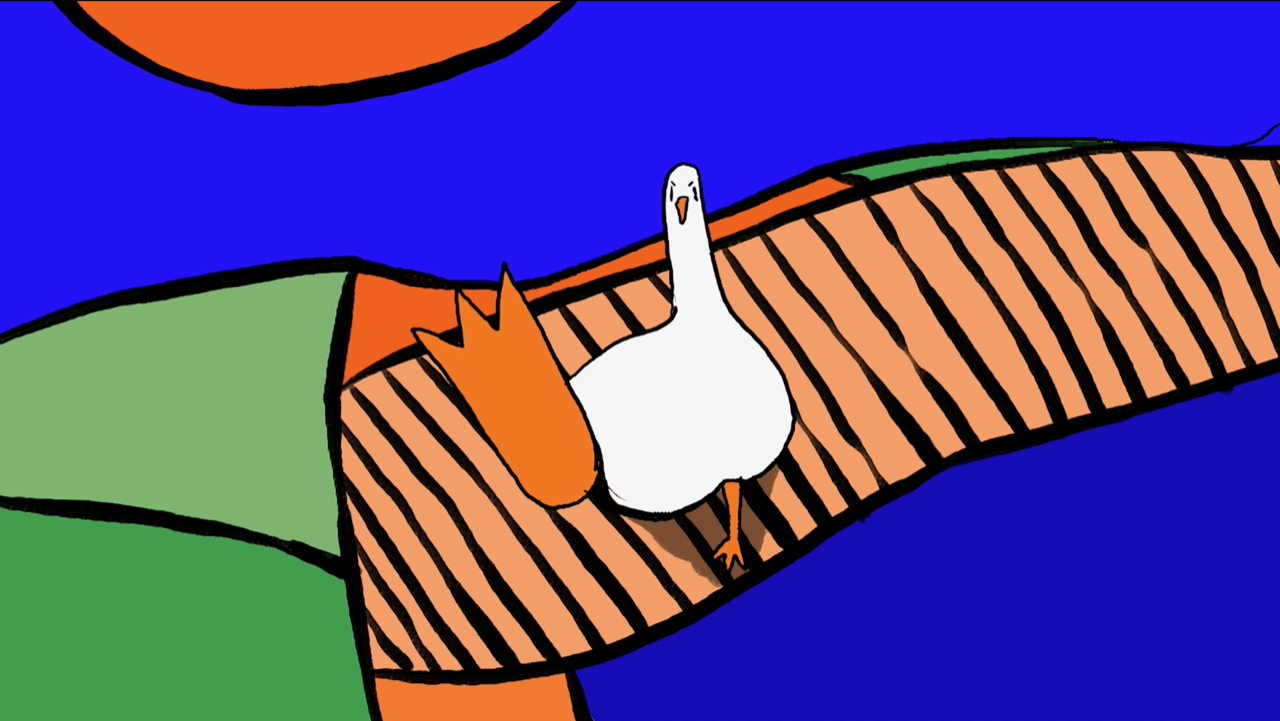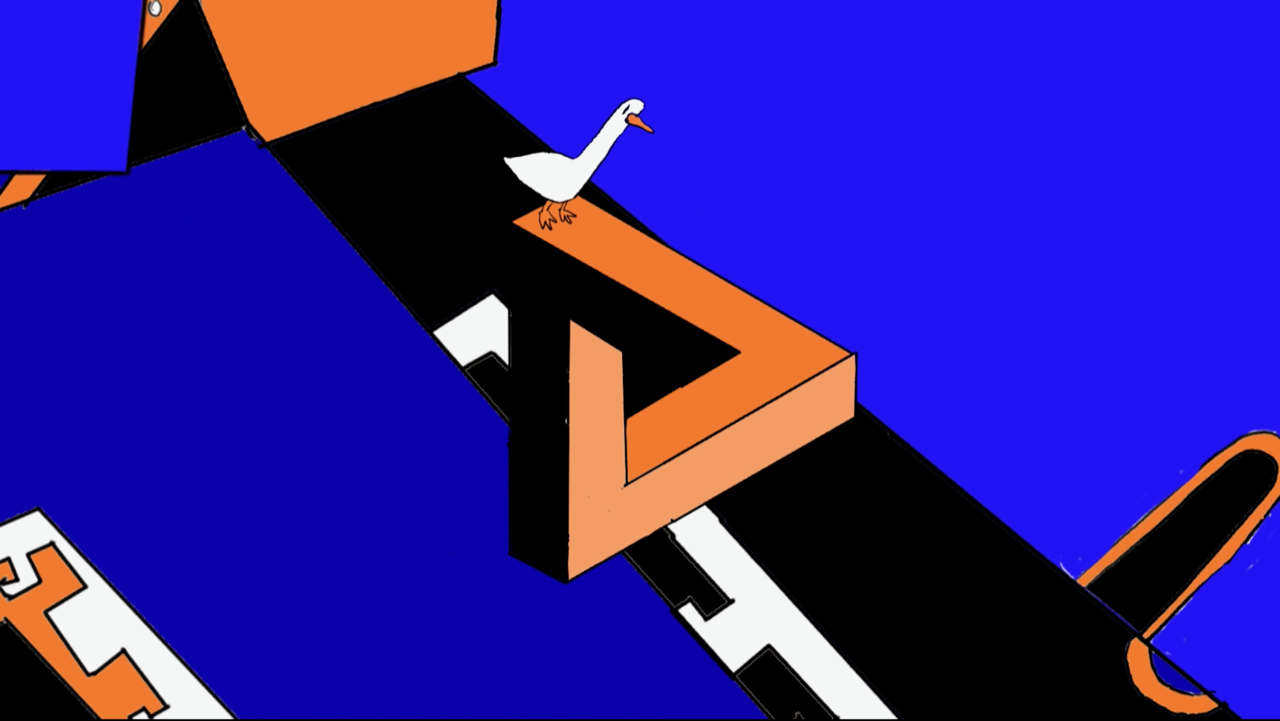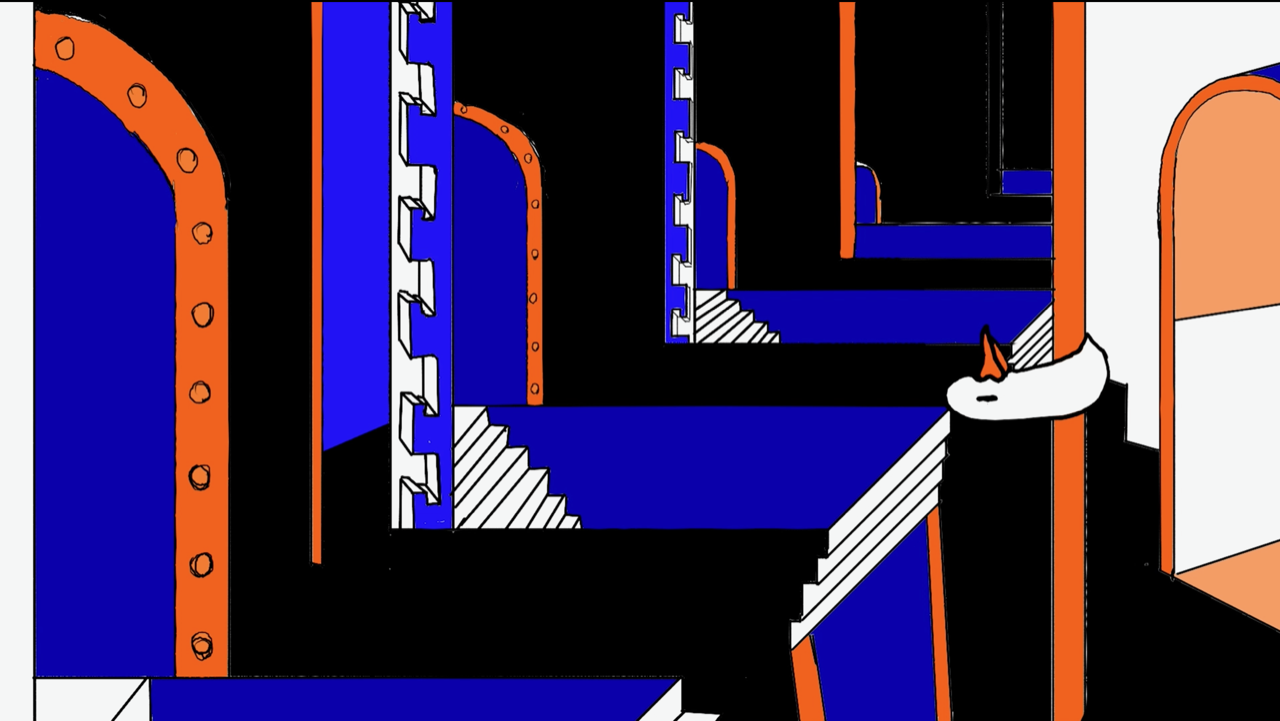The Goose and the Common
A sun originating from the yolk of a fried egg spreads across a land of lush blue, green, and orange, at whose center a goose contentedly sits on her eggs under a tree; but then suddenly, disaster strikes. A foreshock of sorts grips the land, the space begins to turn and shortly thereafter, an unstoppable wave of asphalt comes rolling up and flattens the brood. The goose is deeply shocked. After she pulls herself together again, she begins her trek to the public authorities. She battles in court and finds herself thrown into a world reminiscent of one of M.C. Escher’s endless spaces, letting us feel a desperation similar to the one that seeps in when reading Kafka’s The Castle, and evoking the disorientation that blazes the way when perusing Leonora Carrington’s narrative on madness, Down Below. By choosing the means of animation for the indie rock band Heaven Sent Cat’s rendition of an English protest song from the eighteenth century, director Shadab Shayegan forcibly mediates the main feeling of vertigo through the suspension of physical laws. It becomes apparent that you can’t count on the state.
As the song’s lyrics say:
“The law locks up the man or woman
Who steals the goose from off the common
But leaves the greater villain loose
Who steals the common from off the goose.”
However, those who laid out the law in favor of the Big Boys never reckoned with the fighting spirit of the geese. Through Chinese whispers, the geese group together and proceed against injustice. In this way, The Goose and the Common is at once both a music video and set of instructions. (Melanie Letschnig)
The Goose and the Common
2020
Austria
4 min



